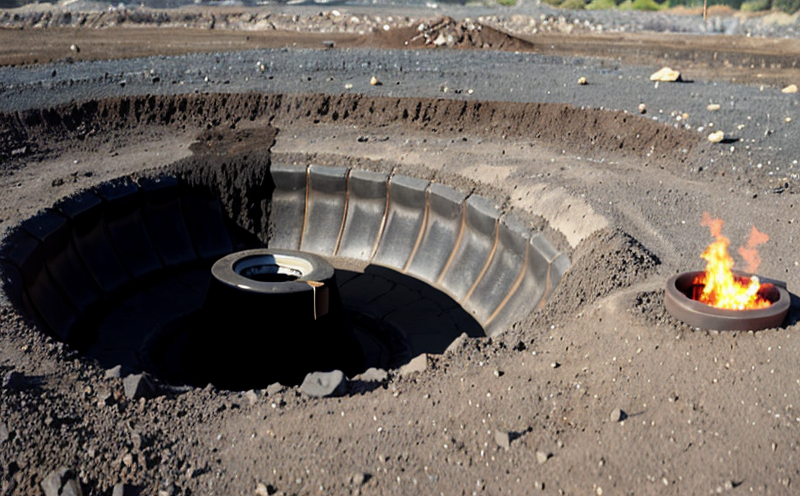ASTM D3174 Ash Content in Coal Testing
The ASTM D3174 ash content testing is a critical process used to determine the proportion of ash-forming materials present within coal samples. This test is essential for quality assurance, compliance with regulatory standards, and optimizing fuel efficiency across various industries including power generation, steel manufacturing, and cement production.
Understanding the ash content helps in predicting the combustion behavior of fuels, thereby influencing the design of burners and boilers to enhance performance and reduce emissions. The ash content also impacts the calorific value of coal, which is crucial for pricing and purchasing decisions by stakeholders involved in fuel supply chains.
The ASTM D3174 method involves heating a sample at 815°C until it has completely turned into an ash residue. This process ensures that all volatile materials are driven off, leaving only the inorganic materials behind. The mass of this remaining ash is then compared to the original sample weight to calculate its percentage by mass.
For accurate results, proper preparation and handling of coal samples are paramount. Samples should be carefully weighed before being placed into a muffle furnace. During heating, it's vital that the temperature remains constant at 815°C throughout the process. Any deviation can lead to inaccuracies in determining ash content.
The equipment used for ASTM D3174 testing includes a muffle furnace capable of maintaining consistent temperatures up to 900°C and an analytical balance accurate down to milligram levels. These instruments ensure precision and reliability, which are critical when dealing with such high-stakes samples as coal.
Once the test is completed, detailed reports must be generated including raw data points like initial weight of the sample before heating and final weight after cooling to room temperature. Additional information such as furnace type, duration of heat application, ambient conditions during testing can also enhance transparency in reporting.
| Applied Standards |
|---|
| ASTM D3174-20 |
This standard specifies the procedure for determining the ash content of coal. It is widely recognized and used globally, providing a uniform method to ensure consistency across different laboratories.
Proper sample preparation is key in achieving reliable results; improper handling can significantly affect accuracy. Therefore, it's recommended that all personnel involved receive training on best practices for sampling and processing coal samples prior to testing.
Why It Matters
- Precision: Accurate ash content measurement is fundamental for ensuring consistent fuel quality.
- Economic Impact: Understanding ash content aids in optimizing production costs by reducing waste and improving efficiency.
- Sustainability: By minimizing the amount of non-combustible materials, coal combustion becomes more efficient, leading to reduced emissions.
- Regulatory Compliance: Adherence to ASTM D3174 ensures that products meet industry-specific requirements set out by regulatory bodies.
The importance of this test cannot be overstated. Inaccurate ash content readings can lead to significant financial losses through poor fuel performance and increased operational costs. Moreover, failing to comply with relevant standards might result in legal issues or reputational damage for businesses operating within the mining sector.
Understanding these implications underscores why accurate ASTM D3174 testing is not just beneficial but essential for all stakeholders involved in coal production and utilization processes.
Aplied Standards
| Applied Standards |
|---|
| ASTM D3174-20 |
The ASTM D3174 ash content test is one of several standards that govern the quality assurance processes within the coal industry. While other tests might focus on moisture levels or sulfur content, ASTM D3174 specifically addresses ash formation which has far-reaching implications for both environmental and economic factors.
By adhering to this standard, companies can demonstrate their commitment to maintaining high standards of product integrity while also contributing positively towards reducing pollution caused by coal combustion.
International Acceptance and Recognition
- ASTM D3174 is recognized worldwide as a reliable method for measuring ash content in coal samples.
- This standard has been adopted by numerous international bodies including the International Organization for Standardization (ISO).
The widespread acceptance of ASTM D3174 reflects its robustness and reliability. Its adoption by global organizations ensures consistency across borders, making it easier for multinational companies to conduct business without worrying about discrepancies in testing methods.
Recognizing the importance of standardized procedures like those outlined in ASTM D3174 fosters trust among customers who rely on accurate assessments when selecting suppliers or evaluating products.





